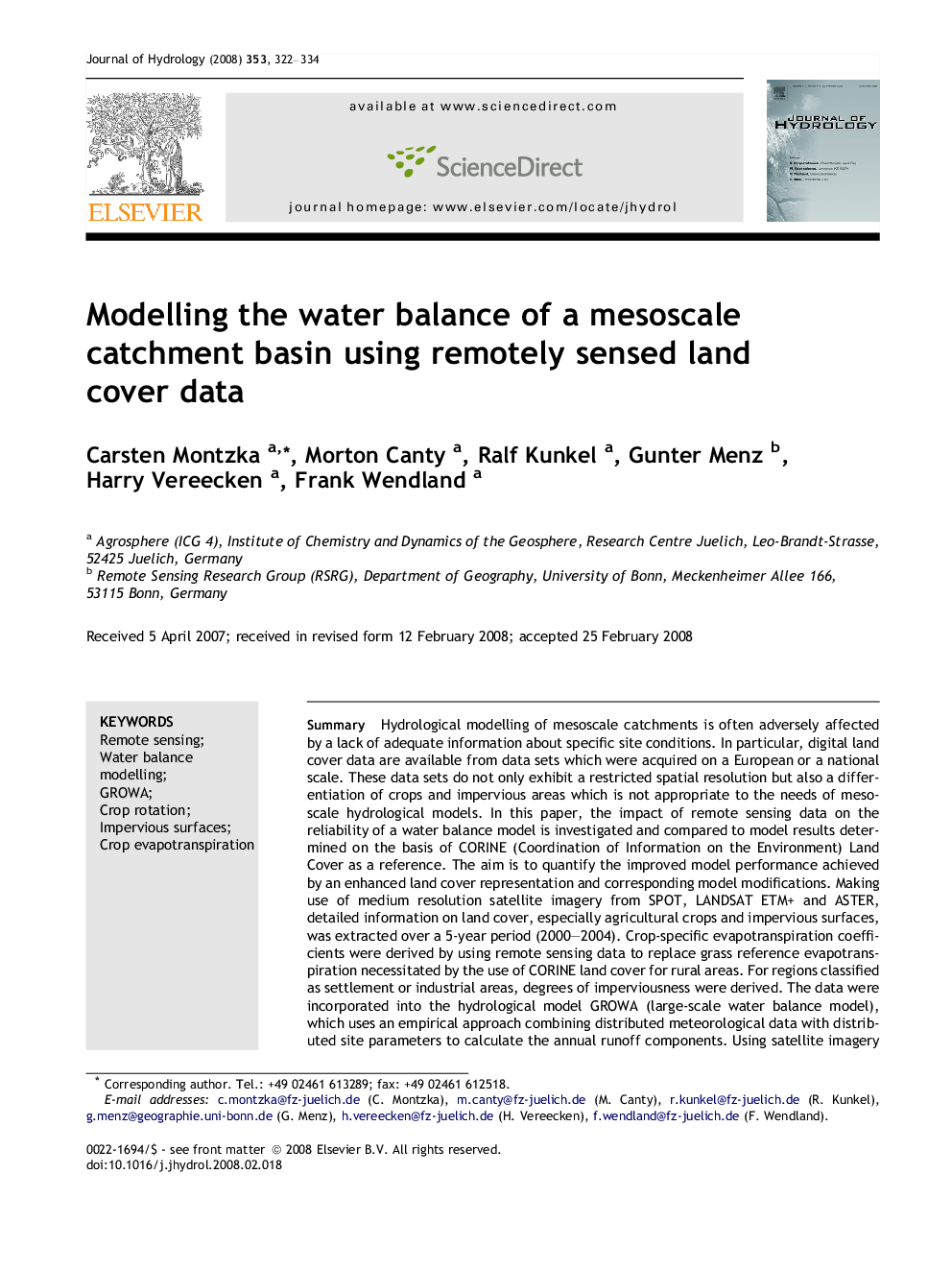| کد مقاله | کد نشریه | سال انتشار | مقاله انگلیسی | نسخه تمام متن |
|---|---|---|---|---|
| 4579441 | 1630109 | 2008 | 13 صفحه PDF | دانلود رایگان |

SummaryHydrological modelling of mesoscale catchments is often adversely affected by a lack of adequate information about specific site conditions. In particular, digital land cover data are available from data sets which were acquired on a European or a national scale. These data sets do not only exhibit a restricted spatial resolution but also a differentiation of crops and impervious areas which is not appropriate to the needs of mesoscale hydrological models. In this paper, the impact of remote sensing data on the reliability of a water balance model is investigated and compared to model results determined on the basis of CORINE (Coordination of Information on the Environment) Land Cover as a reference. The aim is to quantify the improved model performance achieved by an enhanced land cover representation and corresponding model modifications. Making use of medium resolution satellite imagery from SPOT, LANDSAT ETM+ and ASTER, detailed information on land cover, especially agricultural crops and impervious surfaces, was extracted over a 5-year period (2000–2004). Crop-specific evapotranspiration coefficients were derived by using remote sensing data to replace grass reference evapotranspiration necessitated by the use of CORINE land cover for rural areas. For regions classified as settlement or industrial areas, degrees of imperviousness were derived. The data were incorporated into the hydrological model GROWA (large-scale water balance model), which uses an empirical approach combining distributed meteorological data with distributed site parameters to calculate the annual runoff components. Using satellite imagery in combination with runoff data from gauging stations for the years 2000–2004, the actual evapotranspiration calculation in GROWA was methodologically extended by including empirical crop coefficients for actual evapotranspiration calculations. While GROWA originally treated agricultural areas as homogeneous, now a consideration and differentiation of the main crops is possible. The accuracy was determined by runoff measurements from gauging stations. Differences in water balances resulting from the use of remote sensing data as opposed to CORINE were analysed in this study using a representative subcatchment. Resulting Nash–Sutcliff model efficiencies improved from 0.372 to 0.775 and indicate that the enhanced model can produce thematically more accurate and spatially more detailed local water balances. However, the proposed model enhancements by satellite imagery have not exhausted the full potential of water balance modelling, for which a higher temporal resolution is required.
Journal: Journal of Hydrology - Volume 353, Issues 3–4, 30 May 2008, Pages 322–334